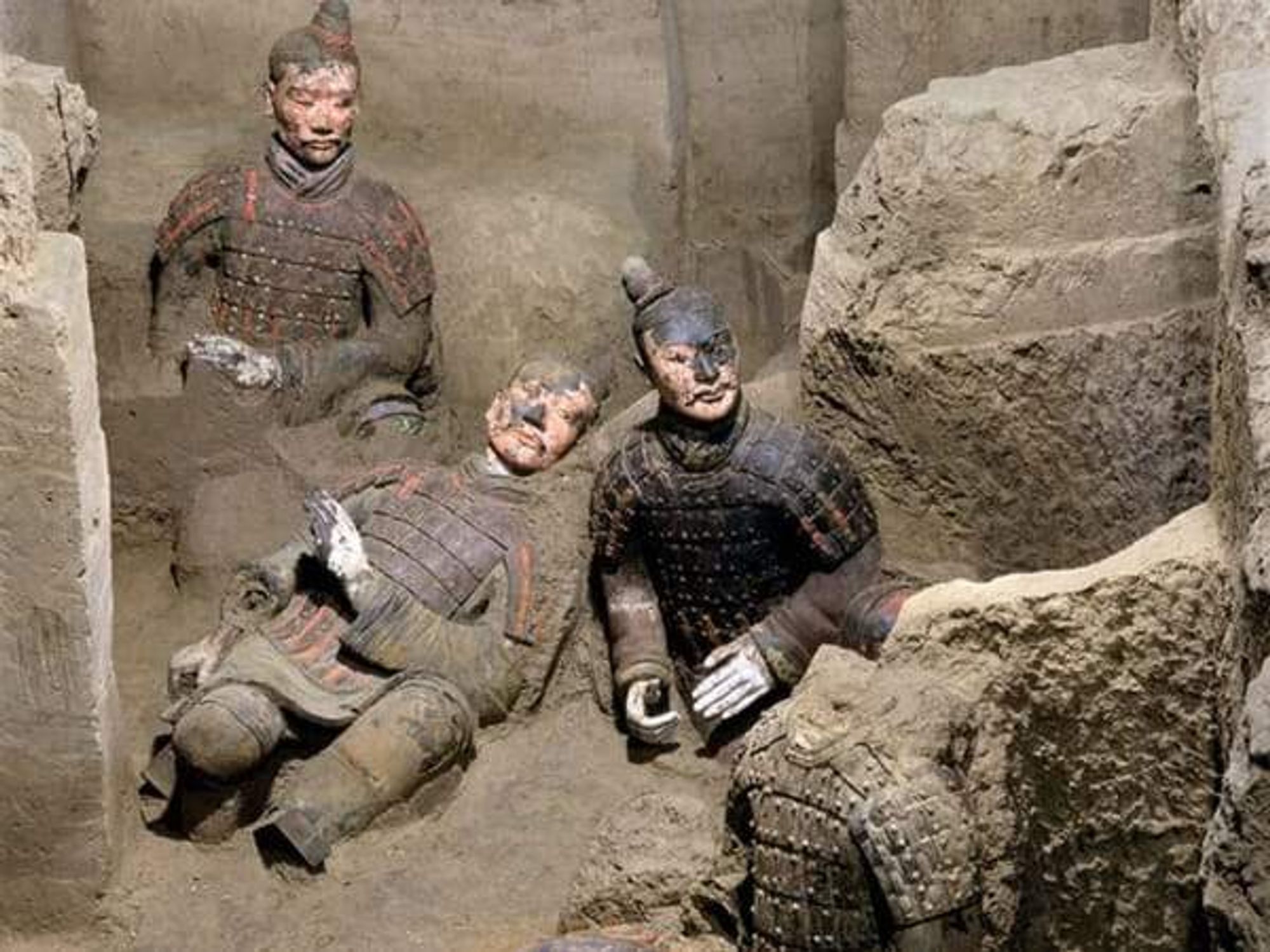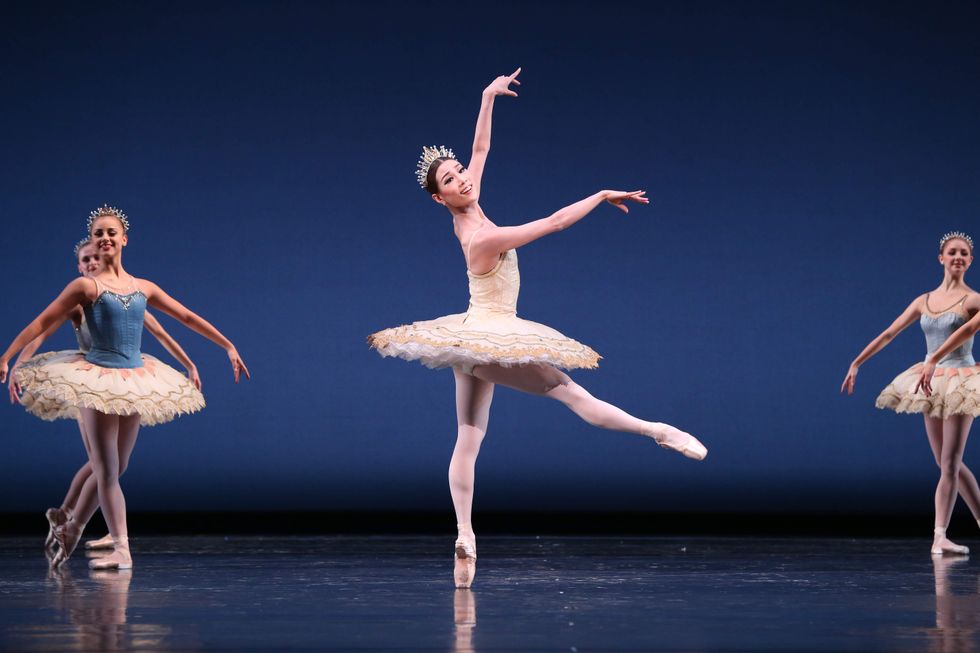Joke's on us
Brilliantly cartoonish Barber of Seville kicks off Houston Grand Opera's 57thseason with a Cubist twist
 Principal artsits from The Barber of SevillePhoto by Felix Sanchez
Principal artsits from The Barber of SevillePhoto by Felix Sanchez From the Houston Grand Opera's production of The Barber of Sevile, Ana MariaMartinez as Rosina, Nathan Gunn as Figaro and Patrick Carfizzi as BartoloPhoto by Felix Sanchez
From the Houston Grand Opera's production of The Barber of Sevile, Ana MariaMartinez as Rosina, Nathan Gunn as Figaro and Patrick Carfizzi as BartoloPhoto by Felix Sanchez Ana Maria Martinez as Rosina and Lawrence Brownlee as Count Almaviva in theHouston Grand Opera's production of The Barber of SevillePhoto by Felix Sanchez
Ana Maria Martinez as Rosina and Lawrence Brownlee as Count Almaviva in theHouston Grand Opera's production of The Barber of SevillePhoto by Felix Sanchez
Cash fluttered down over the audience at the conclusion of Houston Grand Opera’s The Barber of Seville Friday night. As I headed to the car, for a moment I imagined playing a cruel joke on the parking lot attendant. Of course, that $100 bill tucked in my coat pocket was counterfeit, but no matter. I was still in the imaginative realm, where anything goes.
Besides, the opera has the secondary title, The Futile Precaution. Why not sustain the prank a little while longer?
The snow shower of pretend-notes was an elegant, lighthearted way to conclude this early 19th century Italian opera buffa on themes of money, love, deception, and of course, singing. The joke was on us, literally and figuratively, throughout the evening.
“As long as you pay me, you can do as you please,” the music master Don Basilio sings in the first act. It’s a sentiment that neatly summarizes the action of The Barber of Seville.
“As long as you pay me, you can do as you please,” the music master Don Basilio sings in the first act. It’s a sentiment that neatly summarizes the action of The Barber of Seville, and there are many ways to play that vast concept: cynical, metaphorical, bittersweet, and more. Houston Grand Opera settled on “hilarious” with a Cubist twist, making for a smash success to open its 57th season.
There is a lot of money, effort, and great creativity behind this co-production with Canadian Opera Company, Opéra National de Bordeaux, and Opera Australia. Gioacchino Rossini and librettist Cesare Sterbini’s undisputed masterpiece is possibly the world’s most popular opera, but that’s no reason to take the safe road, a strategy that continues to serve Houston Grand Opera well.
A golden key
Fans who remember HGO’s 2007 production of Rossini’s La Cenerentola (Cinderella) will recall that talented Spanish director Joan Font and Spanish choreographer Xevi Dorca have been here before, as well as Barcelona set and costume designer Joan Guillén, described in the program as “a satirical cartoonist whose work has appeared in numerous prestigious Spanish publications and on Spanish television.” His effort, in particular, is a golden key to the triumph of the production.
What Guillén has come up with here is stridently Spanish and theatrically overwhelming. Brilliantly cartoonish, it is also reminiscent of certain landmark collaborations of the Ballets Russes. In particular, I was reminded of Picasso’s décor for Parade (with composer Erik Satie and choreographer Léonide Massine) and also Le Tricorne (with composer Manuel Da Falla and choreography by Massine).
What Guillén has come up with here is stridently Spanish and theatrically overwhelming. Brilliantly cartoonish, it is also reminiscent of certain landmark collaborations of the Ballets Russes.
Perhaps it was the large assortment of multicolored guitars for the men’s chorus in the opening scene, each entirely singular, with a gargantuan pink-and-green one that doubles as a platform for Count Almaviva to serenade Rosina. Later on, the singers climb aboard a massive pink piano that doubles as a writing desk, banquet table, and boudoir for the young lovers.
Guillén’s designs are unstable, that is, you never know what they are going to turn into next. He is constantly playing with scale and proportions. His costumes, as well, are often exaggerated in a way that heightens the comedy: a black veil soars a yard above the head of a stumbling skinny old woman. The police chorus members wear pants with a garish diamond silhouette, making them look like Oompa-Loompas.
Even the lighting designer, Albert Faura, is from Spain. His illuminations are both subtle and surprising, taking us from the dawn of Figaro’s first deal to the chandelier-light of the marriage contract, in unexpected ways. The Barber of Seville is often a self-reflexive work, citing at many instances another “unseen” opera (referenced time and again by several of the singers) called The Scheme That Came to Nothing.
Faura, like the other creative hands in this production, understands the irony of that reference and in this way, often shows lighting designs that are traditional but with a twist. There is great splendor in his illumination of an archetypal tree that stands outside the Bartolo's house, which is most often framed in vivid warm colors.
Italian conductor Leonardo Vordoni gives a classy, understated interpretation of the score, capturing the transparency of Rossini’s orchestration with the utmost sophistication. He follows the singers, who play with the arias, which conveys a sense of freedom throughout the evening.
It’s strange to think that in 1816 (as explained in Roger Pines’ excellent program notes) the premiere at the Teatro Argentina in Rome was a heavily-booed disaster. I think this comes partly from a particular tension in the work, which arises from the Italian/Spanish rivalry sensibility, something I imagine Vordoni pondered. I wonder if the first viewers were at a loss as to who was actually making fun of whom.
Kudos to the cast
My kudos to the cast would have to begin with Lawrence Brownlee as Count Almaviva, the American tenor who would appear to be Italian at birth. What freedom in his delivery, what endless breath he gives to Rossini’s mile-long scales and ornaments, what naturally comic interpretation. Even more, what stunning endurance comes from this talented young singer! His final aria in the second act is a marvel, to say the least. Brownlee was Don Ramiro in HGO’s 2007 La Cenerentola, so he’s familiar with the aesthetic of this particular production team, and it shows.
My kudos to the cast would have to begin with Lawrence Brownlee as Count Almaviva, the American tenor who would appear to be Italian at birth.
Ana María Martínez, who gave such an introspective interpretation of the lead role in Madama Butterfly last season, is a dream as Rosina, delivering unmistakable clarity and refreshing vocal buoyancy. Like Katy Perry, she makes me feel like I’m living a teenage dream. A certain climax occurred during her lengthy, almost suspenseful cadenza in the second act, and she makes a war-horse aria like una voce poco fa into a sort of premiere.
A few months ago, I heard baritone Nathan Gunn sing the premiere of a Jake Heggie song cycle at Dallas Opera, and I was deeply impressed by his soaring baritone voice and considerable all-around glamour. I don’t think he was necessarily warmed up for his Act I famous “Figaro, Figaro” aria, and at times it seemed like he was singing at a lower volume level than the rest of the cast. Those problems were soon resolved by the second act, however, and as an actor he’s perfectly cast in the role of the unrelenting schemer.
Grand, perfect singing came from bass-baritones Patrick Carfizzi and Kyele Ketelsen, respectively as Dr. Bartolo and Don Basilio, not to mention baritone Boris Dyakov as Fiorello, who gave such wonderful performances as Harlequin in last season’s Ariadne auf Naxos and as the Prison Guard in Dead Man Walking.
American mezzo-soprano Catherine Cook as Berta trudges around with great humor throughout most of the opera, a thankless part in many ways, but she is nonetheless compelling and nearly stole the second-act with her short, powerful aria.
(Additional performances on Sunday, Oct. 29, Nov. 4 and Nov. 6. The cast will change entirely for special performances on Nov. 3 (High School Night), Nov. 8-9 (Student matinée), and Nov. 12 (NEXUS matinée), which are conducted by Craig Kier.)
See and hear Nathan Gunn and Ana María Martínez in a scene from The Barber of Seville:





